10 Must Try Spiciest Indian Dishes :Have you ever tried a spoonful of “spicy Indian food” and survived to talk about it.
These cooking challenges are not just about seeing if you can handle spicy food; they are a way to experience the delicious flavors and traditions of India.
Continue reading to find out how these hot and tasty foods can surprise you by being super spicy but also really good.
Introduction to Different Types of Spices Used in Indian Cuisine
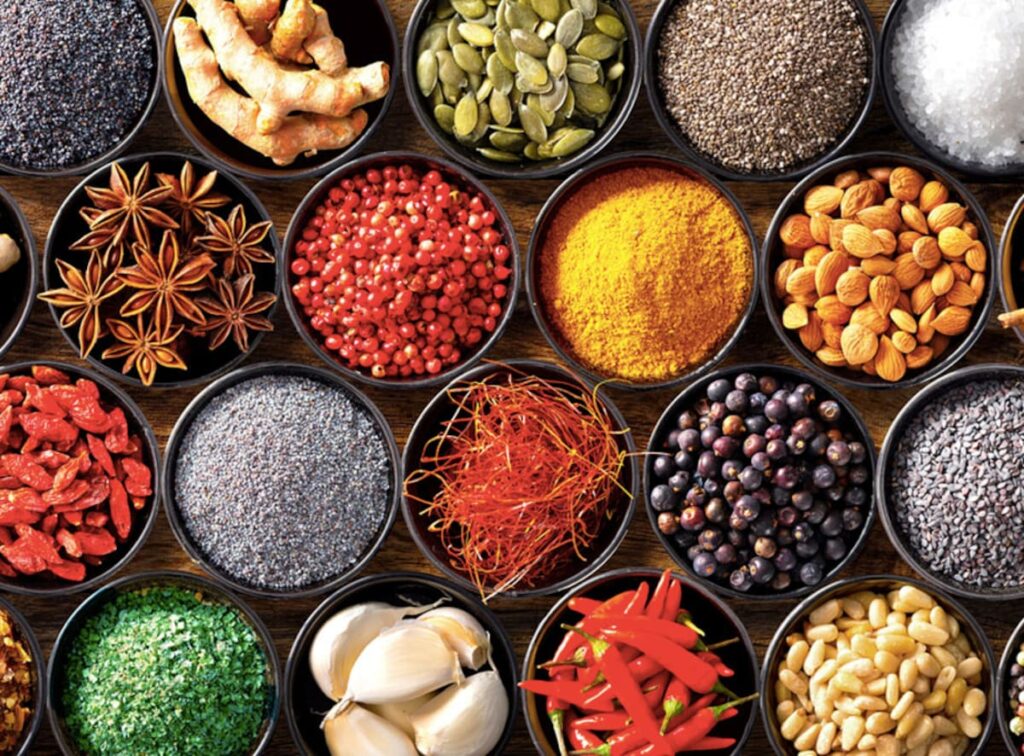
Come to India for a flavorful and spicy adventure with every bite being a balance of flavor and heat.
Picture a place where the comforting heat of cumin mixes with the intense spiciness of bhut jolokia, making food that will make your mouth happy and your eyes tear up with delight.
Trying spicy Indian food isn’t just about being brave enough to handle the heat; it’s about enjoying the many different delicious flavors that make up this colorful and diverse cuisine.
If you like a little spice or a lot, India’s kitchen has something for you. Get ready for a delicious and exciting journey into the world of food with unforgettable flavors.
India has a lot of different types of food. Each part of the country has its own special flavors and ways of cooking.
Many Indian dishes aim to have a good mix of spice and flavor, making them smell amazing and taste very spicy.
This balance is made by using different spices like cumin and bhut jolokia pepper.
“Please simplify this text. “
Discovering the hot tastes of India shows you that heat is not just about spiciness. It’s an important part that makes a dish more interesting and flavorful.
Whether it’s the slow-cooked flavor of a curry or the fast cooking of a stir-fry, spices are added carefully to make sure every bite shows off India’s cooking traditions.
Rewrite this text in simpler words.
If you like different tastes, Indian food has many dishes with different levels of spiciness to suit everyone’s preferences.
From slightly spicy to very spicy, trying India’s spicy foods is both fun and a bit of a challenge. It guarantees an amazing and memorable food adventure.
Must-Try Spicy Indian Dishes.
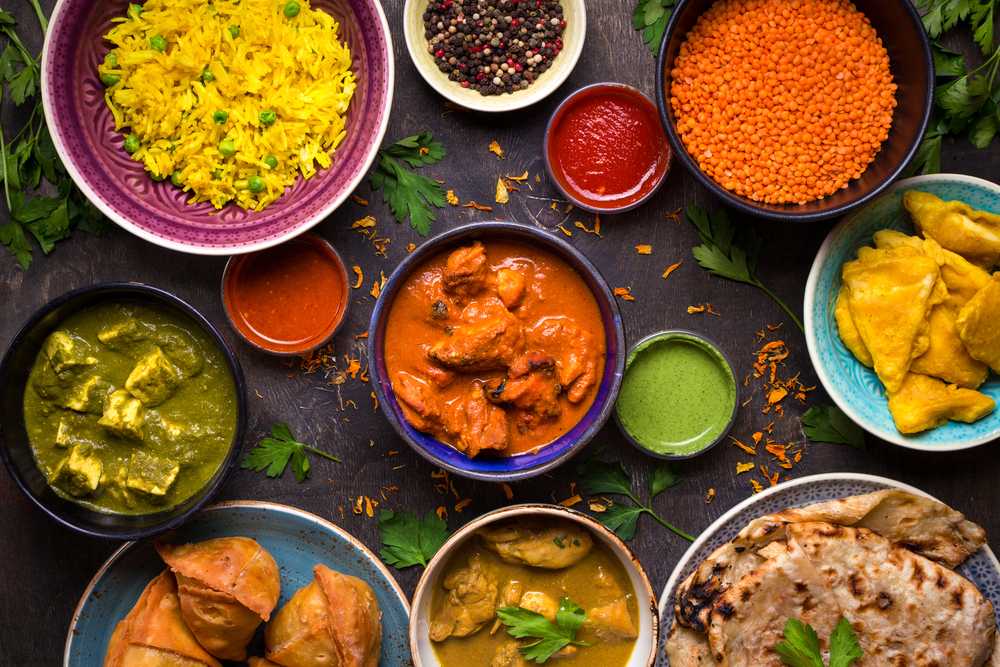
Exploring India’s spicy food takes you on a tasty and hot adventure.
Out of many choices, some dishes are special because they have different spices, ways of cooking, and have an interesting history.
These dishes are not just food; they are opportunities to discover the variety of Indian cuisine.
1.Phaal Curry – The Fiery Delight.

Phaal curry, a notorious Indian curry dish, claims its origins from Indian restaurants in Birmingham.
It’s recognized for its extreme heat, making it a challenge even for the bravest of spicy food lovers.
The dish employs an abundance of scotch bonnet peppers, contributing to its reputation as one of the hottest curries available.
Understanding the Heat Scale.

Indian food can be mild, medium, or very spicy.
Phaal curry is very spicy because it uses strong spices and peppers like the scotch bonnet.
It’s really important for people who are interested in Indian food to know this scale because it helps them know what to expect and makes their dining experience better.
2. Chicken Chettinad – A Tamil Nadu Favorite Chilli is a relative newcomer to Indian food.

A tasty chicken dish from South India made with fresh spices and herbs. Many chefs have created their own versions of the traditional chettinad chicken recipe. Over time, I tried a few things that tasted similar except for their texture, color, and the small amount of spices added.
Key Ingredients That Bring the Heat.
Key ingredients like coconut milk and garam masala play significant roles in Chicken Chettinad, contributing to its distinctive heat and flavour.
Coconut milk adds a creamy texture, balancing the intense spices, while garam masala, a blend of ground spices, introduces warmth and depth to the dish.
3. Beef Vindaloo – A Goan Specialty.
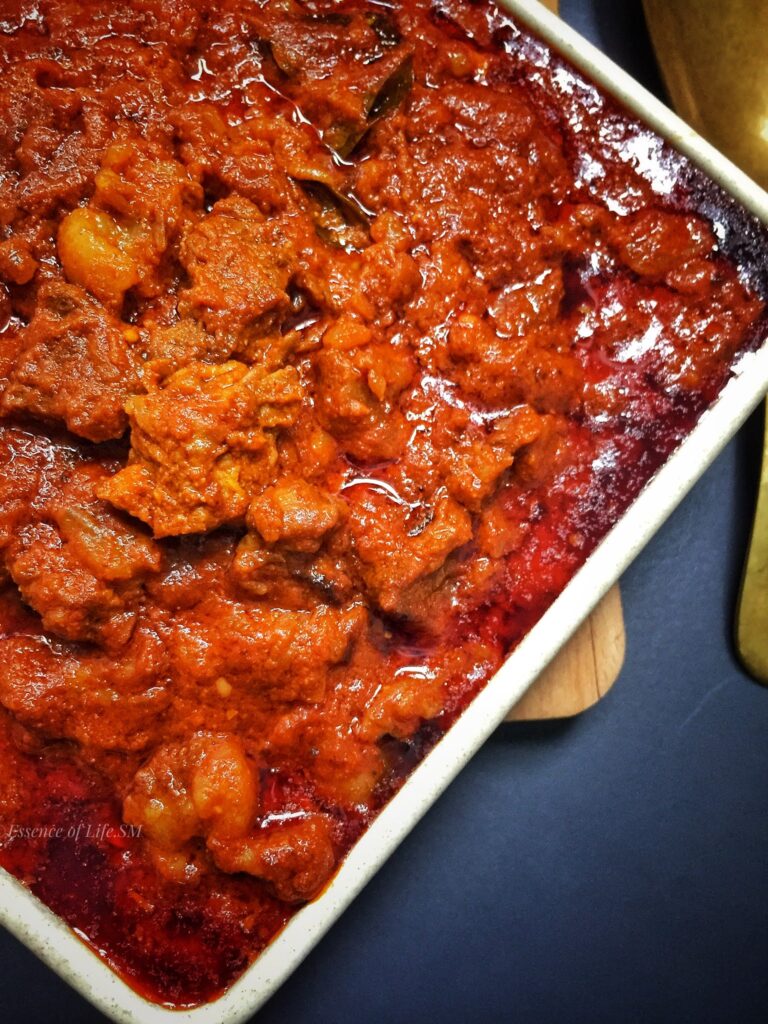
Beef Vindaloo, a beloved Goan specialty, showcases the influence of Portuguese culinary traditions on Indian cuisine.
This dish is known for its heavy use of vinegar and the tender beef, creating a flavour profile that is both sharp and rich.
Unlike some versions that include chicken or lamb, authentic Vindaloo focuses on beef and eschews potatoes, despite the misleading implication of the word ‘aloo’ in its name.
The History Behind the Spice.
The history of spicy foods in India is a tale of cultural exchanges and culinary innovation.
Dishes like beef Vindaloo not only highlight the influence of Portuguese cuisine but also demonstrate how Indians have embraced and adapted these flavours, creating dishes that are uniquely their own.
4. Laal Maas – Rajasthan’s Red Hot Meat Curry.
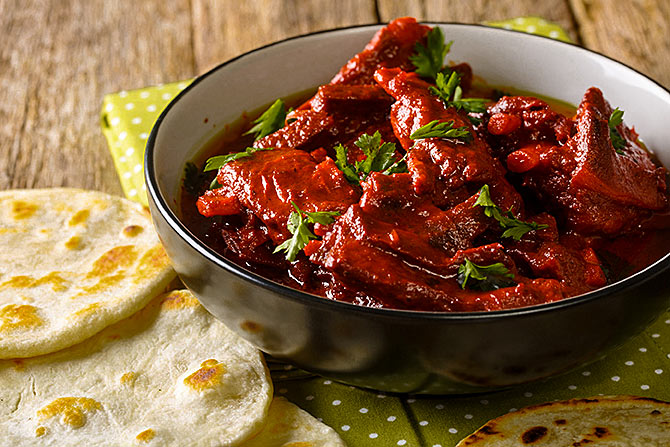
Laal Maas, a mutton curry from Rajasthan, breaks the stereotype of the region’s predominantly vegetarian cuisine.
This dish is renowned for its smoky flavour and the use of mustard oil, offering a distinctive taste that complements the heat from the red chillies.
It’s a testament to Rajasthan’s culinary diversity, showcasing the region’s ability to create dishes that are both spicy and flavorful.
Traditionally Served with Millet Rotis.
Traditionally, Laal Maas is served with millet rotis, a pairing that enhances the flavours of the dish.
The mild, nutty taste of the millet rotis provides a perfect counterbalance to the intense heat and smokiness of the curry, creating a harmonious dining experience.
5. Andhra Chilli Chicken – A Spicy Andhra Pradesh Staple.
Andhra Chilli Chicken, hailing from Andhra Pradesh, is a testament to the state’s reputation for producing some of the spiciest Indian food.
This dish, made with chicken marinated in a green chilli paste, celebrates the abundant use of green chillies, delivering a level of heat that can take one by surprise.
It’s a bold dish that encapsulates the fiery spirit of Andhra Pradesh’s cuisine.
How Green Chillies Elevate This Dish.
The use of green chillies is pivotal in Andhra Chilli Chicken, elevating the dish with their vibrant heat and flavour.
These chillies, integral to the spiciest Indian food, add a fresh, biting heat that distinguishes this dish from others, making it a must-try for those seeking an authentic taste of Andhra Pradesh.
6. Kolhapuri Chicken – Maharashtra’s Spicy Pride.
Kolhapuri Chicken, originating from the spice-loving city of Kolhapur in Maharashtra, stands as a symbol of the region’s passion for heat.
This dish is celebrated for its incredibly hot flavour profile, achieved through the use of a special Kolhapuri masala.
The masala, a unique blend of spices, imbues the chicken with a depth of flavour that is both intense and unforgettable.
The Unique Blend of Kolhapuri Masala.
The secret to the fiery taste of Kolhapuri Chicken lies in the unique blend of Kolhapuri masala.
This specially crafted spice mix combines a variety of ground spices, delivering a heat that is both exhilarating and complex.
It’s this masala that sets Kolhapuri Chicken apart, making it a proud representation of Maharashtra’s spicy culinary heritage.
7. Kozhi Curry – A Spicy Affair from Kerala.
Kozhi Curry, originating from Kerala, is a tantalising dish that captures the essence of Indian spice through its use of both green and red chillies.
This hot, spicy chicken curry is believed to have been introduced to India, bringing with it a rich blend of flavours that entice the palate.
Its fiery nature is balanced by the aromatic spices, making it a must-try for those who appreciate deep, complex flavours in their food.
Coconut Oil’s Role in Flavor.
The use of coconut oil in Kozhi Curry is not just a cooking necessity but a flavour enhancer that brings a distinct richness to the dish.
Coconut oil, deeply ingrained in Kerala’s culinary traditions, adds a subtle sweetness that complements the spice, creating a harmonious blend of tastes.
Its ability to absorb and accentuate the flavours of the spices used makes it an indispensable part of this spicy affair.
8. Madras Curry – Heat from the Heart of Chennai (formally Madras).
Madras Curry, a celebrated dish in the realm of Indian cuisine, comes straight from the heart of Chennai, offering a spicy yet not overpowering taste experience.
Crafted with a medley of meat, garlic, turmeric, pepper, coriander, cumin, and a generous helping of chillies, it stands out as a vibrant example of Indian culinary art.
While it may not claim the title of the spiciest Indian food, its rich flavours and welcoming heat make it a perfect introduction for those new to Indian cuisine, as well as a beloved staple for aficionados.
Often served with basmati rice, it’s a dish that promises a memorable dining experience.
The British Influence on This Dish.
The British influence on Madras Curry can be traced back to colonial times, when the British fascination with Indian spices led to the adaptation and spread of this dish beyond the Indian subcontinent.
The British contributed to popularising the recipe, adapting it to suit their tastes while maintaining its essential Indian flavours.
This cross-cultural culinary exchange enriched the dish, making it a symbol of the fusion between British and Indian cuisine.
9. Chicken 65 – A Spicy Appetiser from Tamil Nadu.
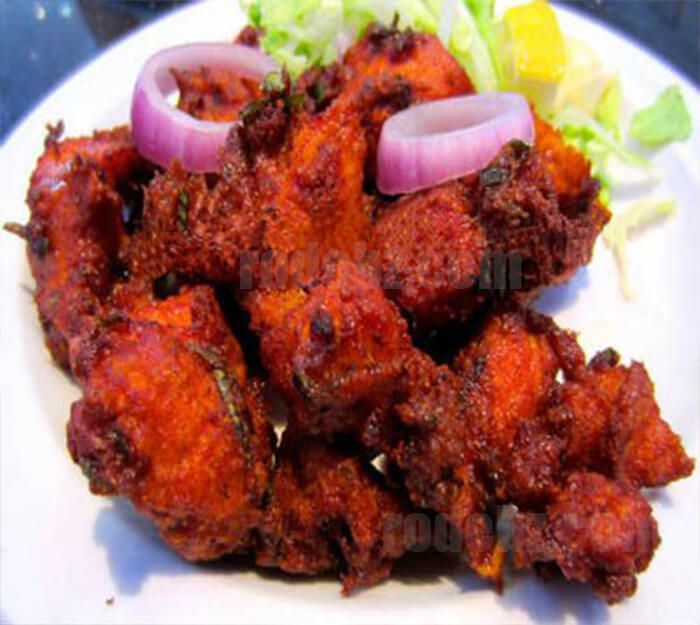
Chicken 65, hailing from Tamil Nadu, is a spicy, deep-fried chicken dish that has become a beloved appetiser and snack throughout India.
Its flavour is largely attributed to red chillies, though the exact blend of ingredients can vary, adding to its mystique and appeal.
When fried to a golden brown, this dish captures the essence of Indian spice and offers a finger-licking good experience that’s hard to resist.
Its popularity is a testament to its deliciousness and the rich culinary heritage of Tamil Nadu.
The Mystery Behind the Name.
The origin of the name ‘Chicken 65’ is shrouded in mystery, sparking curiosity and various theories among food enthusiasts.
Some speculate it was the 65th item on a menu, while others believe it was created in 1965.
Despite the uncertainty surrounding its name, the dish’s popularity remains unwavering, making it a staple in Indian cuisine and a subject of fascination for those exploring the depths of spicy Indian appetisers.
Regional Spiciness: Understanding the Diversity.
The diversity of spicy Indian dishes is a reflection of the country’s vast culinary landscape, where each region brings its unique blend of flavours and heat to the table.
From the fiery curries of the south to the more tempered spices of the north, India’s regional cuisines showcase an extraordinary range of flavours that cater to different palates.
This diversity not only enriches India’s food culture but also invites food lovers to embark on a spicy culinary journey across the country.
The Variations in Spice Use Across India
The use of spices in Indian cooking is both an art and a science, with each region boasting its distinct signature through the adept use of aromatic spices and herbs.
Garam masala, bay leaves, and other aromatic spices play a pivotal role in creating the depth of flavor that Indian foods are celebrated for.
From the hearty vegetarian dishes of the north to the seafood delicacies of the coast, the variations in spice use across India reflect the rich culinary diversity and heritage of the country, making it a fascinating exploration for any food lover.
A Taste of Adventure: Concluding Thoughts on Spicy Indian Dishes.
Embarking on a culinary journey with spicy Indian dishes is like setting off on an adventure where each bite is a discovery of heat and flavour.
From the fiery punch of phaal curry, hailed as the spiciest curry, to the delectable heat of beef vindaloo and the unique taste of kolhapuri chicken, these dishes showcase the versatility of chilli powder and other spices.
The bhut jolokia, known as the hottest chilli in the world, makes an appearance in some of these recipes, challenging even the most seasoned spice lovers.
Yet, it’s not just about the heat; each dish, from the non-vegetarian delights like chicken chettinad to the flavorful lamb meatball curry with the hint of fennel seeds, tells a story of tradition, innovation, and the love of spice that is woven into the fabric of Indian cuisine.
#AuthenticInd.
ianFood is known for its bold and diverse flavours, especially when it comes to the spicy palate.
From fiery curries to tangy chutneys, Indian cuisine offers a culinary adventure like no other.
If you’re ready to launch on a journey of intense flavours and aromatic spices, then get ready to explore the world of authentic Indian food.
In this blog post, we will research the spicy elements that make Indian cuisine truly unique and unforgettable.
Key Takeaways:.
- Authentic Indian food can be very spicy: Indian cuisine is known for its bold and vibrant flavours, often achieved through the use of various spices and chili peppers.
Be prepared for a spicy kick when trying authentic Indian dishes.
. - Spice levels can be adjusted: Many Indian restaurants offer dishes with customizable spice levels, so don’t be afraid to ask for a milder version if you’re not accustomed to very spicy food.
This way, you can still enjoy authentic Indian flavours without overwhelming heat.
. - Embrace the experience: Tackling the spicy flavours of authentic Indian food can be a bold and rewarding culinary adventure.
Don’t shy away from trying new dishes and flavours – you might just discover a new favourite dish.
.
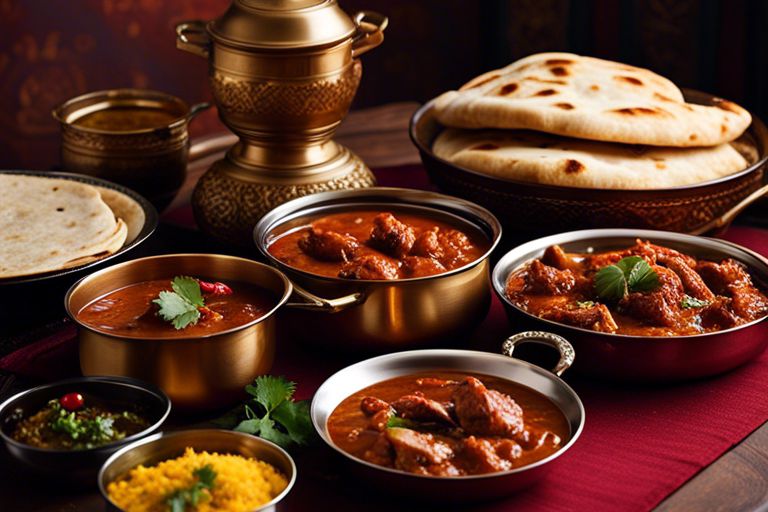
The Heat Spectrum of Indian Spices.
Even the most seasoned food enthusiasts can find themselves sweating and reaching for water when faced with the fiery flavors of authentic Indian cuisine.
The heat in Indian dishes comes from a variety of spices that vary in intensity, creating a unique and complex flavor profile.
.
Understanding the Scoville Scale.
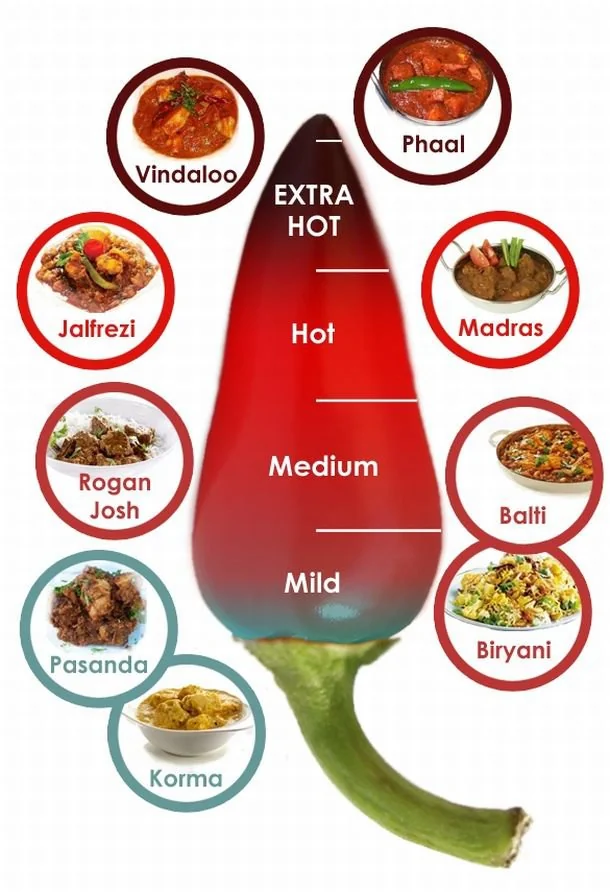
Spectrum of spiciness in Indian spices can be understood through the Scoville Scale, which measures the heat level of peppers and spicy foods.
This scale assigns a numerical value to the amount of capsaicin present in a spice, the compound responsible for the heat sensation.
.
By familiarising yourself with the Scoville units of Indian spices, you can better navigate the spice level of dishes on a menu and tailor your choices according to your heat tolerance.
.
Key Spices that Pack a Punch.
On the journey through Indian cuisine, there are several key spices that are known to pack a punch in terms of heat.
These include red chili powder, black peppercorns, and mustard seeds, each bringing a unique level of spiciness to a dish.
.
To truly appreciate the depth of flavors in Indian cooking, it’s imperative to embrace the heat that these spices bring and understand how they interact to create a balanced and flavorful dish.
.
Regional Variations in Spice Levels.
Any adventurous foodie knows that exploring the diverse regional cuisines of India is a journey filled with a myriad of flavors and spices.
Each region of India offers a unique culinary experience, ranging from intensely fiery dishes to milder, more subtle flavors.
.
The Fiery Dishes of Rajasthan and Andhra Pradesh.
Regional variations in spice levels are particularly prominent in the states of Rajasthan and Andhra Pradesh.
Known for their bold and fiery flavors, dishes from these regions often feature a generous amount of red chilies, black pepper, and other potent spices.
Rajasthan’s famous Laal Maas, a spicy meat curry, and Andhra Pradesh’s fiery Gongura Pickle are not for the faint of heart.
These dishes pack a punch that will surely test your spice tolerance.
.
With unique regional ingredients like the Rajasthani Mathania chillies and the Andhra Pradesh’s Guntur chillies, these regions offer a culinary experience that is not only spicy but also deeply flavorful.
The use of local spices and cooking techniques passed down through generations adds to the richness and complexity of the dishes, making them a must-try for spice enthusiasts.
.
Spicy Breakfast Dishes
While the idea of starting the day with a kick of spice might make some reach for a glass of water, in India, it’s a cherished tradition. Spicy breakfast dishes are not just about waking up the taste buds; they’re about energizing the spirit for the day ahead.
Masala Dosa, a crispy crepe made from rice and lentils, comes filled with a spicy potato mixture. Served with a side of sambar (a spicy lentil soup) and coconut chutney, it’s a south Indian breakfast staple that packs flavor and heat in every bite.
Upma, a savory porridge made from semolina or rice flour, often gets a spicy twist with the addition of green chillies, mustard seeds, and aromatic curry leaves. This light yet satisfying dish is popular across India for its simplicity and zest.
Poha, flattened rice seasoned with turmeric, mustard seeds, and sometimes even green chillies, is a go-to breakfast in the western regions. It’s a quick and delicious dish that combines soft textures with a mild, spicy flavor, often garnished with fresh coriander and squeezes of lemon juice for that extra zing.
These breakfast dishes illustrate the versatility of spicy Indian cuisine, seamlessly incorporating heat into the first meal of the day. They provide a balanced blend of carbs, proteins, and fats, along with the invigorating kick of spice to start the day on a high note.
Milder Flavours of the North.
In contrast to the fiery dishes of Rajasthan and Andhra Pradesh, the northern states of India offer a more mellow and balanced approach to spice levels.
The cuisine of states like Punjab and Uttar Pradesh focuses more on aromatic spices like cumin, coriander, and turmeric, creating dishes that are flavorful without being overwhelmingly hot.
.
Spicy Vegetarian and Vegan Options.
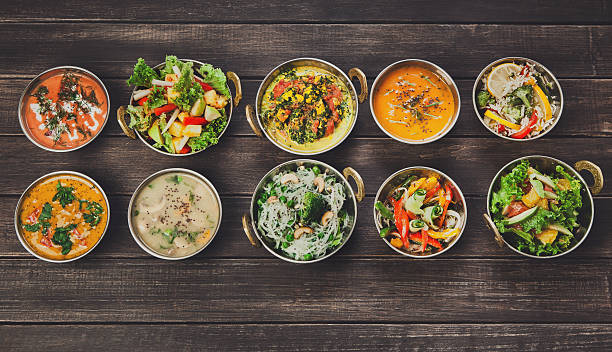
Venturing into the heart of vegetarian and vegan delights, Indian cuisine unfolds a spectrum of dishes that are both tantalising and inclusive.
.
Rajma, a kidney bean curry simmered in a spicy tomato gravy, emerges as a comfort food that soothes the soul while igniting the senses.
It’s a testament to how simple ingredients can be transformed into a dish that’s rich, satisfying, and bursting with flavour.
.
Baingan Bharta, where roasted eggplant is mashed and cooked with a melange of spices, onions, tomatoes, and peas.
This spiced mashed eggplant dish is a celebration of textures and flavours, offering a smoky undertone that complements its spicy profile.
.
spicy Masoor Dal presents lentils in a new light.
This red lentil curry is a staple in many Indian households, appreciated for its hearty consistency and the warmth of spices that envelop each bite.
These dishes not only cater to a broad audience but also showcase the versatility of Indian cuisine in accommodating dietary preferences without compromising on taste or spice.
.
Chutneys and Pickles.

Diving deeper into the realm of Indian flavours, the role of chutneys and pickles cannot be understated.
These condiments serve as the perfect accompaniments, adding an extra layer of heat and flavour to meals.
The diversity in chutneys is astounding, ranging from the sweet and tangy tamarind chutney to the fiery green chilli chutney, each adding a unique dimension to the dining experience.
.
.
Pickles, or “achar,” hold a special place in Indian households, with recipes passed down through generations.
Made from a variety of vegetables and fruits, these pickles are marinated in spices and oil, allowing them to develop a complex flavour profile over time.
Whether it’s the lip-puckering sourness of lemon pickle or the robust spice of mango pickle, these condiments are essential for those who crave an extra kick in their meals.
.
.
Street Food Specialties.
No exploration of spicy Indian dishes would be complete without delving into the world of street food.
India’s streets are a culinary paradise, offering an array of snacks that are as spicy as they are flavorful.
.
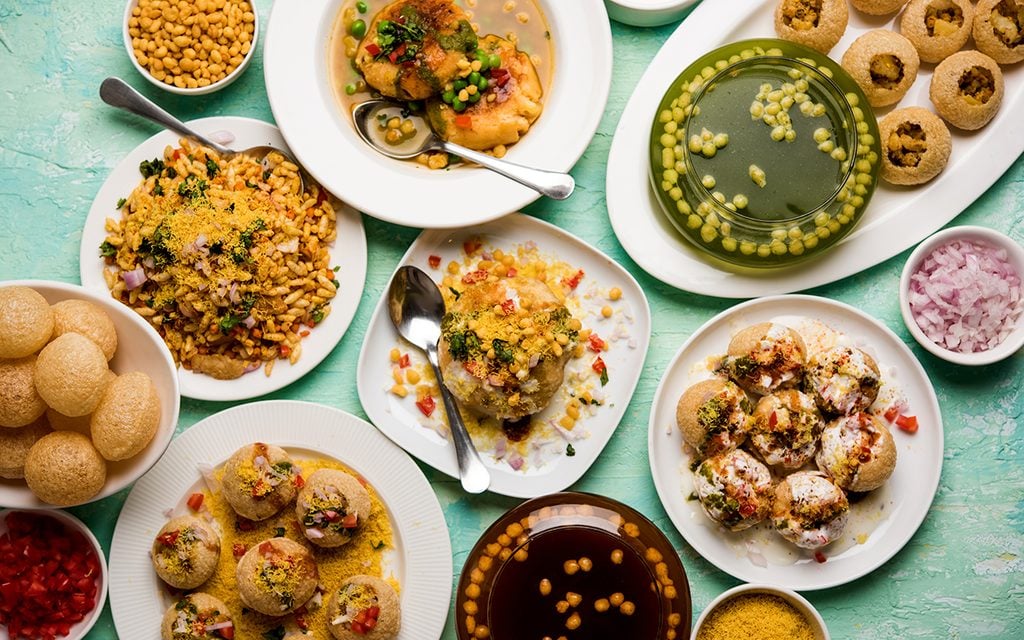
Chaat, a broad term that encompasses a variety of snacks, is a riot of textures and flavours, with dishes like bhel puri and aloo tikki chaat standing out for their spicy tang and crunch.
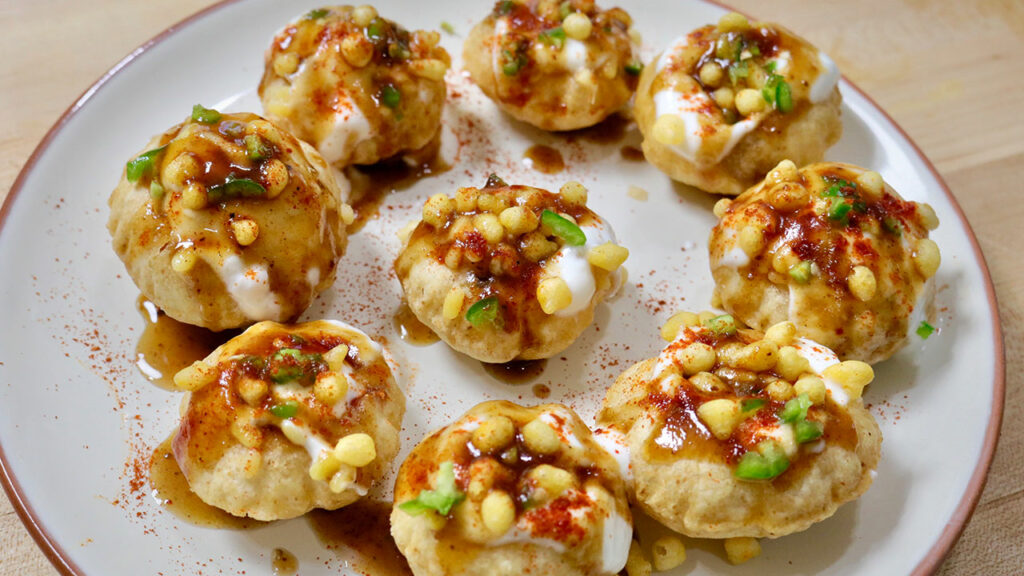
Pani Puri, also known as golgappa, invites one to experience the thrill of spicy tamarind water bursting in the mouth, coupled with the crunch of the puris and the freshness of the fillings.
It’s an experience that’s exhilarating, to say the least.
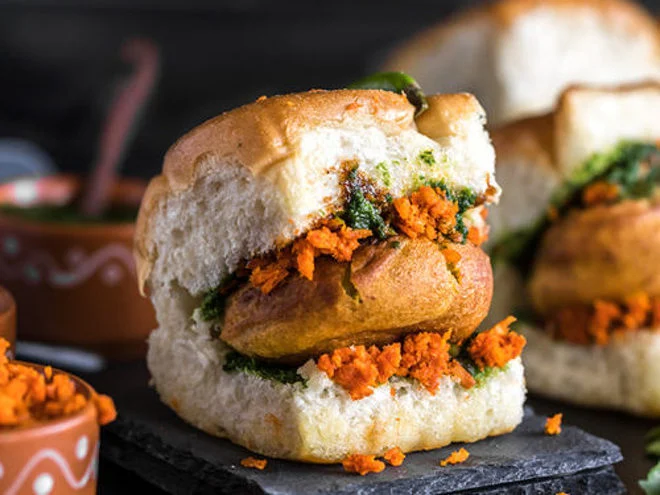
Vada Pav, often dubbed the Indian burger, is a simple yet ingenious creation where a spicy potato fritter is nestled within a bread bun and served with an assortment of chutneys.
This humble snack has garnered a cult following, epitomising the charm of Indian street food.
.
Through the lens of spicy vegetarian and vegan options, chutneys and pickles, and street food specialties, we glimpse the vast and vibrant world of spicy Indian dishes.
These culinary treasures not only tantalise the taste buds but also weave a narrative of cultural richness and diversity, inviting all to partake in the fiery feast that is Indian cuisine.
.
Preparing Your Palate.
Now that you’ve decided to commence on a culinary adventure with authentic Indian cuisine, it’s important to prepare your palate for the bold and spicy flavours that await you.
Indian food is known for its rich and complex blend of spices, which can sometimes be overwhelming for those new to this cuisine.
However, with the right approach, you can fully enjoy the diverse array of flavours that Indian food has to offer.
Tips for Enjoying Spicy Indian Meals.
An important tip for enjoying spicy Indian meals is to start slowly.
Begin with milder dishes and gradually work your way up to spicier options as your taste buds acclimate to the heat.
Additionally, consider pairing your spicy meal with a cooling side dish, such as raita, to balance out the flavours.
Finally, be open to trying new spices and flavour combinations – you may discover a new favourite dish that you never knew existed.
- Start with milder dishes and gradually increase spice levels.
. - Pair spicy meals with cooling side dishes like raita.
. - Be open to trying new spices and flavour combinations.
Remedies for Overwhelming Heat.
On the off chance that you find yourself overwhelmed by the heat of a particularly spicy Indian dish, there are several remedies that can help soothe your palate.
Yogurt, with its cooling properties, can be a great way to counteract the spiciness.
Additionally, a squeeze of lemon or lime can help cut through the heat and balance out the flavours.
Indian cuisine often incorporates ingredients like yoghourt, coconut milk, and ghee, which can help alleviate the spiciness of a dish.
These traditional remedies have been used for centuries to provide relief from the intense flavours of Indian food.
Adventure in Indian Gastronomy.
Must-Try Spicy Indian Dishes.
The world of Indian cuisine is filled with bold and vibrant flavours that are sure to tantalise your taste buds.
One of the most exciting aspects of Indian food is its use of spices, which are not only aromatic but also pack a punch of heat.
Whether you are a seasoned spice lover or looking to expand your culinary horizons, exploring spicy Indian dishes is a must.
The rich and diverse culinary heritage of India offers a plethora of spicy delicacies to choose from.
Dishes like the fiery chicken vindaloo, the robust lamb curry, and the iconic biryani with its complex layers of flavours are just a few examples of the spicy wonders waiting to be discovered in Indian cuisine.
Cooling Accompaniments
When it comes to the fiery world of spicy Indian dishes, it’s not just about how much heat you can handle; it’s also about knowing how to soothe the blaze. Enter the heroes of the Indian dining experience: cooling accompaniments. These are not just sides; they’re an essential part of the meal, offering a delicious reprieve from the spice.
First up, we have Raita, a yogurt-based condiment that’s as versatile as it is cooling. Whether it’s cucumber raita, boondi raita, or mint raita, each spoonful brings a refreshing contrast to the spice, making those fiery dishes more approachable.

Then, there’s the beloved Lassi. This yogurt-based drink can be sweet or salty, but it’s always a welcome addition to any spicy meal. Mango lassi, in particular, has gained international fame, marrying the sweetness of ripe mangoes with the creamy tanginess of yogurt to create a drink that’s both refreshing and decadent.
And let’s not forget about the cooling desserts. Indian cuisine offers a variety of sweet treats that not only conclude the meal on a high note but also help tame the tongue after a spicy feast. From the rose-scented delight of Gulab Jamun to the creamy, cardamom-laced Kulfi, these desserts are the perfect way to round off a spicy meal.
Regional Spices and Their Uses
Diving into the essence of spicy Indian dishes requires a journey through the vast and diverse landscape of regional spices. Each corner of India brings its unique flair to the table, primarily through the spices that define its cuisine.
In the northern regions, Kashmiri chillies stand out for their vibrant red color and moderate heat, adding depth and brilliance to dishes like Rogan Josh. Unlike their fiery counterparts, these chillies enhance the food’s color and flavor without overpowering it with spice.
Moving south, Karnataka introduces us to Byadagi chillies. Known for their deep red hue and mild heat, these chillies are a staple in Kannadiga cuisine, contributing to the rich color and aromatic warmth of dishes like Bisi Bele Bath without making them excessively spicy.
In the eastern part of India, particularly in Bengal, Panch Phoron—a five-spice blend including fenugreek seed, nigella seed, cumin seed, black mustard seed, and fennel seed—brings a distinctive flavor to the cuisine. This blend is used to temper oils, adding a complex flavor profile to the dishes.
Contrastingly, the west, especially in Gujarat and Maharashtra, uses a lot of Asafoetida (Hing) and Godha Masala, a special blend of spices that includes cloves, bay leaves, and cinnamon, among others. These spices add a unique taste and aroma to vegetarian dishes, making them stand out.
The use of regional spices in Indian cooking is not just about adding heat; it’s about creating a symphony of flavors that resonate with the cultural and climatic diversity of each region. Through the skillful use of these spices, Indian cuisine achieves its hallmark complexity and variety, catering to a spectrum of palates with a common thread of warmth and flavor.
Cooking Techniques That Enhance Spice
In the realm of spicy Indian dishes, the magic isn’t just in the mix of spices but also in how they’re unleashed through cooking techniques. These methods are pivotal in transforming simple ingredients into complex and layered flavors, showcasing the ingenuity of Indian culinary practices.
Roasting spices is a game-changer. This technique, often used before grinding the spices into masalas, releases essential oils and intensifies flavors, making the spices more aromatic and potent. It’s the secret behind the rich depth of curries and gravies that are staple to Indian cuisine.
Tempering (Tadka) is another critical technique, especially in enhancing the spice quotient of a dish. By heating spices in hot oil or ghee, their flavors bloom, creating a fragrant oil that’s then mixed into dals, curries, and even chutneys. Mustard seeds crackle, cumin sizzles, and asafoetida foams, layering the dishes with a smoky, spicy undertone.
Then there’s the use of Mustard Oil, particularly in Eastern Indian and Bengali cooking, which adds a pungent, fiery dimension to dishes. Its high smoking point makes it ideal for frying and sautéing, embedding a unique sharpness that complements the heat from chillies and other spices.
Smoking, using a piece of charcoal to infuse a smoky flavor into dishes, is a technique often overlooked but immensely effective in adding complexity to spicy dishes. It mimics the traditional cooking over open fires, lending a rustic taste that elevates the dish’s heat in a more nuanced manner.
These cooking techniques are not just methods but are an art form passed down through generations, each adding a layer of flavor, enhancing the spice, and making Indian dishes uniquely vibrant and tantalizingly spicy.
Cooking Spicy Indian Food at Home.
Spicy Indian food is not only delicious in restaurants, but it can also be recreated in the comfort of your own kitchen.
By mastering a few key techniques and stocking up on crucial spices like cumin, coriander, turmeric, and red chilli powder, you can begin on a culinary journey to bring the flavours of India to your home.
Experimenting with different spice combinations, adjusting the heat level to suit your taste, and exploring the diverse regional cuisines of India are all part of the joy of cooking spicy Indian food at home.
With a bit of practice and a willingness to embrace bold flavours, you can create authentic and satisfying Indian dishes right in your own kitchen.
Spicy Indian cuisine is not just about heat; it’s about balance and harmony of flavours.
By understanding the intricate interplay of spices and ingredients in traditional Indian recipes, you can create dishes that are not only spicy but also nuanced and full of depth.
The key is to start with quality ingredients, have patience in the cooking process, and most importantly, to have fun experimenting with different spice blends and cooking techniques.
Summing up.
With this in mind, exploring the world of authentic Indian cuisine can be a bold and thrilling journey for food enthusiasts.
The diverse range of spices, flavours, and cooking techniques in Indian food offers a unique and unforgettable culinary experience.
While the bold and fiery nature of some dishes may seem intimidating, the rewards of indulging in authentic Indian cuisine are well worth the adventure.
So, are you brave enough to tackle the spicy flavours of authentic Indian food?
Only you can decide, but one thing is for sure – the experience will be one to remember.
FAQ
What makes Indian food spicy?
Indian food is known for its spicy flavors due to the use of various spices such as red chili, black pepper, turmeric, and mustard seeds. These spices not only add heat but also enhance the overall flavor profile of the dishes.
How can I handle the spiciness of Indian food?
To tackle the spicy flavors of authentic Indian food, you can start by requesting milder spice levels when dining out. Additionally, pairing spicy dishes with yogurt-based raita or drinking milk can help neutralize the heat. Gradually increasing your tolerance for spice over time can also help you enjoy Indian cuisine more comfortably.
Are there spicy Indian dishes that are recommended for beginners?
Yes, there are milder options for those who are new to Indian cuisine. Dishes like butter chicken, vegetable korma, and tandoori chicken are flavored with spices but are typically less spicy than othe
what is the scale on spicy food on indian foods?
The scale used to measure the spiciness of Indian foods is called the Scoville Scale.
which indian foods are not spicy?
Idli, dosa, samosa, and gulab jamun are some Indian foods that are typically not spicy.
what are some indian foods?
Here are some popular Indian foods:
Biryani
Butter chicken
Samosa
Masala dosa
Tandoori chicken
Paneer tikka
Naan bread
Rogan josh
Chole bhature
Gulab jamun
what are traditional indian foods?
Traditional Indian foods include dishes like biryani, samosas, dosas, butter chicken, paneer tikka, and gulab jamun.
what indian foods to avoid during pregnancy?
Raw or undercooked meats, unpasteurized dairy products, certain types of fish (high in mercury), raw eggs, and street vendor food.
what are traditional indian foods?
Traditional Indian foods include dishes like biryani, samosas, dosas, butter chicken, and masala chai.
indian foods to eat when sick?
Chicken noodle soup, ginger tea, rice with boiled vegetables, and banana are good foods to eat when sick.
what are fibre rich indian foods?
Chickpeas, lentils, black beans, split peas, quinoa, oats, broccoli, chia seeds, and avocados are some fibre-rich Indian foods.
what indian foods do americans like?
Popular Indian foods among Americans include dishes like butter chicken, samosas, tikka masala, naan, biryani, and masala dosa.
Where korma is on scoville scale?

Korma is on comes on mild spicy on scoville scale
What makes Saoji Chicken Curry one of the spiciest dishes?
Saoji Chicken Curry, a popular dish originating from Nagpur, is known for its fiery blend of spices, including the Indian red chili, which contributes to its reputation as one of the hottest curry in the world. The spices used in Indian cooking, especially the unique spice mix in Saoji cuisine, make it a standout in the list of the spiciest Indian dishes.
Can you recommend a popular dish for someone trying Indian food for the first time?
For those new to Indian cuisine, starting with something less intimidating than the spiciest dishes is advisable. A popular dish like Butter Chicken, with its creamy tomato sauce, can be a gentle introduction. It’s flavorful but not overwhelming, and pairs well with Indian bread, offering a great way to ease into Indian food.
Q: Which regional Indian cuisines are known for their hot and spicy flavors?
A: When it comes to Indian food known for being hot and spicy, Andhra food and South Indian cuisine stand out. These regions incorporate a large number of red chillies and other potent spices, making dishes like Andhra Chicken Curry and fiery Mutton Curry from Rajasthan some of the spiciest dishes you’ll ever encounter.
Q: What are some Indian dishes to try if I love spicy food?
A: If you love spicy food, you should dive into the realm of super spicy Indian dishes. The list of the spiciest Indian dishes includes Phaal Curry, which is often touted as the hottest curry in the world, Vindaloo, a super spicy pork dish from Goa, and Chettinad Chicken, a famous hot and spicy dish from Tamil Nadu, showcasing the full spectrum of spices used in Indian cooking.
Q: Are there vegetarian options among the spiciest Indian dishes?
A: Absolutely! Indian cuisine offers various vegetarian dishes that are just as spicy as their meat counterparts. Dishes such as Vegetable Kolhapuri, a mixed vegetable curry, and Spicy Masala Bhindi, a dish made with okra, are packed with heat and flavor, offering a vegetarian take on the spiciest Indian dishes.
Q: What Indian bread is best paired with spicy curries?
A: When enjoying spicy Indian curries, pairing them with the right Indian bread can enhance the experience. Naan and Roti are popular choices, with their soft texture making them perfect for scooping up rich, spicy sauces. For something different, a Paratha or Bhakri can also complement the heat and flavors of spicy curries well.
Q: Is there a way to reduce the heat level when cooking a spicy Indian dish at home?
A: Yes, when cooking a spicy Indian dish at home, you have the control to adjust the heat level to your preference. Reducing the quantity of spices such as red chili powder and green chilies can significantly lower the heat. Adding a dollop of yogurt or coconut milk can also help tame the spice, making the dish more palatable if you’re not accustomed to really spicy food.
Q: What’s unique about Indian red chilies compared to other types?
A: Indian red chilies, integral to many dishes, offer a unique blend of heat and flavor that is essential to Indian cooking. They provide a distinctive vibrant color and intense heat, distinguishing them from other varieties. The quality and type of Indian red chili used can significantly impact the dish’s spice level, making it a vital ingredient in creating the signature taste of many Indian dishes.
